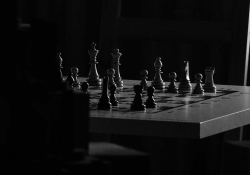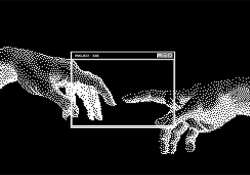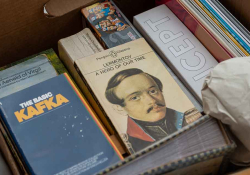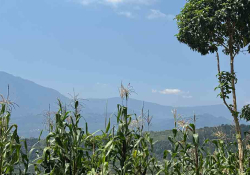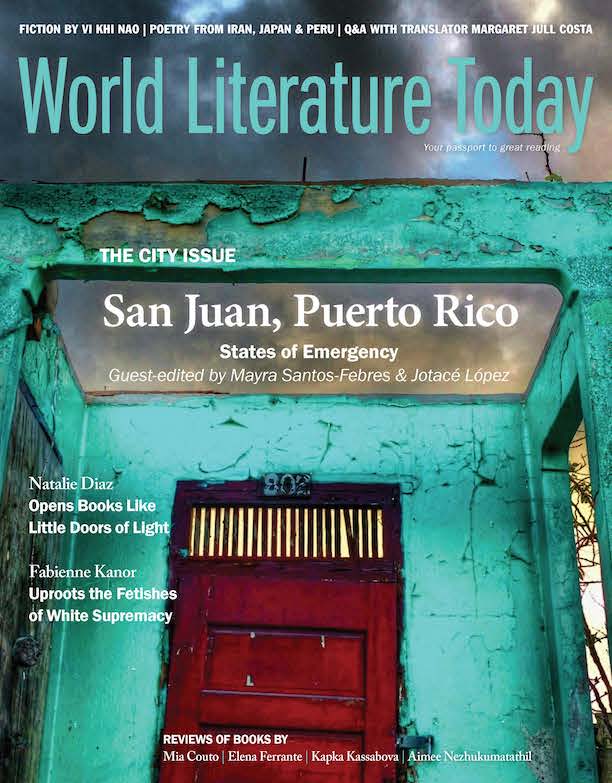Liquid History
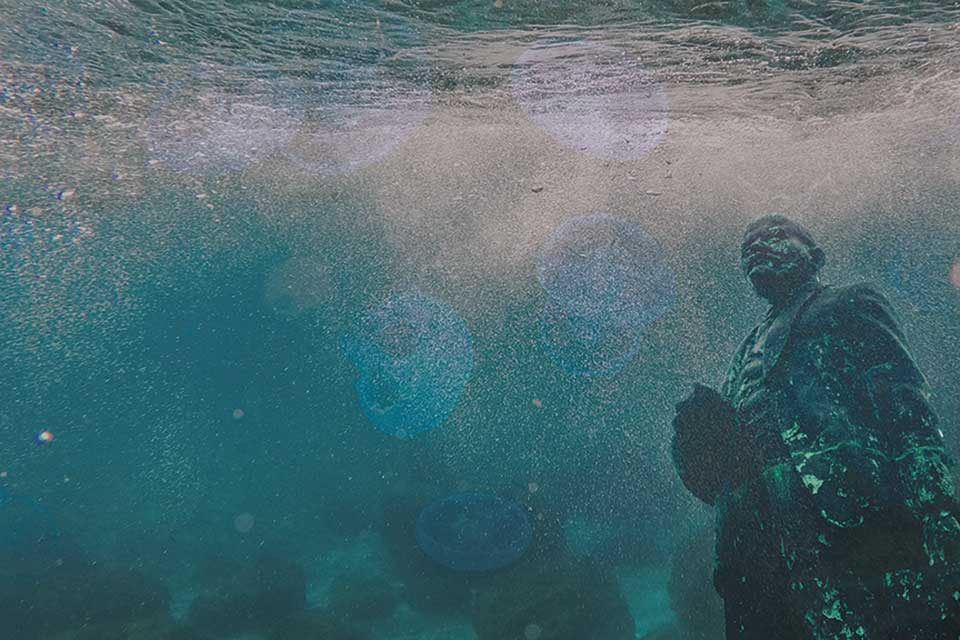
Scuba-diving in the Black Sea, a writer contemplates Lenin in the Crimean seabed, the watery landfall from which historical figures are never meant to rise again.
In 2015 Lenin statues were coming down at such a clip in Ukraine that a website actually tracked the phenomenon somewhat like the morel map in the US tracked the fruiting of mushrooms each year, from south to north.
Raining Lenins posted interactive charts and a searchable database. Interested parties could see when statues had come down and where. Archived videos allowed for binge-watching the most dramatic topplings. One selection, captioned “Eclectic Crowd,” showed a group of people in sock hats, puffer coats, and hooded parkas looping a chain around Lenin’s outstretched arm and pulling him down, their gloved hands gripping the metal links of the chain and yanking, as if in a tug-of-war with history.
Lenin’s outstretched arm all by itself was as recognizable as a full-body Lenin. An image of him gesturing furiously from atop the train at the Finland Station in Petrograd was iconic. Holding that arm high, he harangued the crowd, whipping the proletariat into a frenzy. Orators of the day cultivated stagy, overblown body language when addressing the masses, and Vladimir Ilyich had perfected the milieu. If ever you saw a photo of a Ukrainian landfill from 2015 that focused in on one single outstretched arm in bronze jutting up from the shredded plastic and junk, you knew it was attached to a Lenin down below.
By autumn of 2015, Lenin was mainly down below, mainly brought low by wave after wave of eclectic Ukrainian crowds. The country jettisoned five hundred statues over a six-month period.
This wasn’t the first Leninfall. Ukraine de-Leninized after leaving the Soviet Union, circa 1991. Statues that had long dominated city squares throughout the country ended up recycled as scrap. A select few wound up swimming with the fishies off Cape Tarkenhut, a favorite dive spot on the Crimean peninsula. At a depth of thirteen meters, they were on display in an underwater kingdom called Soviet Atlantis. Other Communist-era relics had experienced a similar burial at sea there, too. Whether out of irony or artistry, divers had brought the castoffs and decommissions here over the past twenty-eight years and fashioned a final resting place for them in the Black Sea’s crystal waters.
Standing on the deck of the Night Pearl (Ночная жемчужина), a seventy-five-foot liveaboard out of Sevastopol, I fiddled with my regulator, angling for a tight enough seal between its silicon mouthpiece and the flexible hose of the nitrox tank on my back. Buckles, straps, and valves weren’t things I wanted to mess with in the midst of a panic attack at thirteen meters. Not that I was on the verge of panicking, but novice divers had to overcome plenty of fears, not the least of which concerned breathing underwater. Gaining expertise with the gear, mastering the gear, training with the gear, was a hedge against those fears. I patted the pockets of my buoyancy compensator vest, feeling for the lead weights.
“Consider a balance between what is ditchable and what is nonditchable,” our instructor, Kirill, had said yesterday when we went through our drills. “Ditch enough weight,” he told us, “to guarantee positive buoyancy in the depths.”
Positive buoyancy, I thought now, in the depths. I watched the skipper maneuver the Night Pearl toward a dive buoy that marked Soviet Atlantis. The shifting surface waters shimmered around the buoy, and I studied the veils of sunlight looping within the glassine sea. We were more or less directly above that archive of surplus Lenins right now. Positive buoyancy was precisely what they no longer possessed. A distinction between what was ditchable and what was nonditchable had settled itself emphatically down in the sediment of the Crimean seabed years before. The Crimean seabed had become a safekeeping place for things never meant to rise again.
The Crimean seabed had become a safekeeping place for things never meant to rise again.
The thrum of the engines resonated up through my flippered feet. I glanced back toward shore. We were about a hundred meters out. The knobby edge of the peninsula was a mix of sandstone nodules and pale shales. Marly slabs alternated with striations of tuff, a dark, porous limestone. This gave the coast a vertical and stacked look, like a well-layered dessert torte rising high above the sea.
I had gained my PADI Open Water certification on our jaunt from Sevastopol, completing hands-on tests with equipment alongside other students. As our boat trekked northward the day before, the crew docked at decent intervals in coastal coves and grottos where we could train. My fellow students and I had logged an hour of practice in the Cup of Love, a stone pool surrounded by craggy lava-rock walls. The crater of an extinct Cretaceous-era volcano formed the cup of the Cup of Love, and the Black Sea kept it brimming via tunnels and inlets. A favorite site for freestyle cliff divers, the pool mirrored exactly the emerald-teal waters offshore and boasted a liquid transparency. Its wave-free stillness was optimal for cycling through low-stakes submersion drills. Our low-stakes drills yesterday involved learning to mouth-breathe with a regulator.
I sank to a depth of ten meters, and Kirill, hovering off to the side, peered through his mask, a dual-lens technical model that made him look alien-like, startled. I removed the regulator from my mouth and held it aloft in my hand long enough for him to verify. He gestured a shaka—rocking his loosely clenched fist back and forth with both pinkie and thumb extended—a “copy that” for those communicating underwater.
I rocked a shaka in his direction, and he finned back to the surface. I pressed the regulator’s mouthpiece between my lips again, clamped down with my molars on the positioning wings, and cleared it, blowing forcefully out, before inhaling a cold breath of nitrox. Learning to breathe like this was not the most intuitive of skills.
Exhaling slowly, I watched my bubble trail fizz upward. Nitrox was like Juul for divers. The visuals were everything. I felt like I was inside a bubblicious computer screen saver from the 1990s at the exact moment when animators figured out how to render objects in glossy three-dimensional glory.
I treaded water, maybe five meters above the floor of the Cup of Love, and watched a stonefish swim through a cluster of sea shrubs anchored there. Bottom dwellers like it sported the kind of tendril-based camouflage that made them look like branches of the sea shrubs themselves, an evolutionary adaptation, no doubt. Shell chips, sand, and pebbles littered the seabed. Nothing in my fin-work stirred up any sediment or roused even a cloud of rock flour from the stony depths.
I breathed in a fresh nitrox stream. This was enriched air, pressurized—a fine-tuned mix of oxygen and nitrogen that allowed divers to stay under longer. The higher ratio of oxygen—32 percent, as opposed to the 21 percent found in ambient air—counterbalanced a nitrogen buildup in the blood that might otherwise cause the bends upon ascending.
Thirty-two percent oxygen hit every diver differently, so there was no way to predict what one’s unique response would be before using it. For some, oxygen had a slight narcotic effect—a numbing aspect, a sparkle-in-the-brain feel. All my life I had overresponded to substances—marijuana, caffeine, even yellow mustard—so I wasn’t surprised to experience a mild oxygen narcosis when first trying nitrox. The sensation was pleasant, as if a percentage of “x” had dissolved into my blood and begun to buzz with a percentage of “y” that had heretofore held itself in check, as if under tight seal.
Those rare moments underwater when I exhaled a nitrox breath and did not immediately draw another but just allowed my body to hang weightlessly there, inert and emptied out, were quietly disquieting. They put me in mind of a day when I would fall—dead weight—a static and inanimate thing unable to remain upright.
Staying alive took so much energy, some of it conscious, a lot of it unconscious and on automatic pilot, like double-checking the street for cars before crossing. Staying alive was reliant on the reflex of respiration—filling our lungs involuntarily, without thinking.
Learning to scuba-dive had brought me face-to-face with rays, schools of wrasse, rust-chewed anchors from antiquity, and also quietly disquieting thoughts. It was as if a crucial component had begun to seep through a hard-to-detect gap or tear, and I was suffering the bends of the mind. If this was a side effect of nitrox, then it probably needed a black box warning.
Standing on the deck of the Night Pearl right now, I cinched the clips on my buoyancy compensator vest another notch and rolled my shoulders underneath the neoprene, ascertaining mobility. The skipper had dropped anchor near the buoy for Soviet Atlantis, and we were ready to dive.
I saw the bearded profile of Karl Marx first, followed by armless Venus de Milo.

Ropes of daylight played across the seabed like strands of necklaces, sun-laced and in constant dazzle, the most ineffable of treasures. Translucent jellyfish floated at certain depths, as if marking the meters of our descent as we made our way down, each jellyfish luminous with its own lavender glow. I exhaled and sank, light and adrift in weightless conditions. Dozens of crabs scuttled for shelter under nearby cobbles. Everything looked closer underwater, no matter how custom-fitted the mask, and I kept stretching my hands out, touching along rocky ledges, trying to gauge how near, how far. Kirill swam ahead, our self-appointed tour guide now for this underwater exhibit. I saw the bearded profile of Karl Marx first, followed by armless Venus de Milo. Kirill spun in his bubble trail to face us, miming a cartoonish shrug, his hands palm up, feigning puzzlement: Venus and Karl together as never before.
Clearly Kirill was relishing his jokey role as master of ceremonies. I gave him a thumbs up.
Every exhibit in every museum anywhere on earth had a kind of narrative flow or orderliness, a curated plotline that made the objects make sense, which allowed the museum visitor to glean the significance of various items and events. In the most basic way possible, museums contextualized the past and explicated it. The stories we told above the surface in those esteemed bricks-and-mortar buildings had a certain conventional logic. Rational people could follow that logic.
The logic down here at thirteen meters was ad hoc and touched by the sea, like vividly recognizable dream imagery planted amid floating kelp pods and swaying marine grasses. Strobes of sunlight came filtered down through the saltwater, as if to direct one’s gaze, like a well-placed LED would on a museum’s wall. A replica of London Bridge tilted up from the seabed—and next to it leaned a small-scale model of the World Trade Center’s twin towers. Both seemed to herald a mishmash of postapocalyptic clutter. Nearby, a school of fish swam through an Eiffel Tower.
A replica of London Bridge tilted up from the seabed—and next to it leaned a small-scale model of the World Trade Center’s twin towers. Both seemed to herald a mishmash of postapocalyptic clutter.
It struck me as odd that such a beloved French symbol would find its cast-off home in Soviet Atlantis—what was the reasoning here? I remembered, though, how nineteenth-century artists had railed against the Eiffel Tower’s construction in Paris, the classical composer Jules Massenet among them. The Eiffel Tower was “the hateful shadow of the hateful column of bolted sheet metal,” according to protesters. They said it didn’t belong in a cityscape that included Notre-Dame. The eclectic Ukrainian crowds who had looped chains around Lenin had said the same thing about the Communist leader, too. Soviet Atlantis was a haven for pariahs and misfits, a fusion museum of spontaneous art, spontaneous history, freighted and traumatic kitsch.
Corralled underwater, Vladimir Ilyich was waiting to receive the curious—some of whom had gills. Blennies darted among numerous busts of Lenin as if attending a convention of impersonators and lookalikes. Lined up on a rock shelf, one right after the other, the busts were like a collector’s prized assemblage. One life-size statue, standing slightly apart from the others, caught my eye. Flocked with red algae and stippled with barnacle-like scales, over time this Lenin had slowly received an encrusted veneer from the sea.
I finned my way around him.
Removed from the human realm and viewed in the company of wrasse, rays, and crabs, Lenin seemed both accessible and comical. This was a Chia pet Lenin. Reaching out, I touched the chin-point of his goatee, feeling the bristle of algae growing there. Iron Felix hunkered off to the side, a loathsome figure whom Lenin had appointed to head the Cheka in 1917, the Communist secret police, forerunner of the KGB. I could see a marble bust of Napoleon nearby, his bicorne hat draped in sea grass, which waved in the current like Spanish moss. Lenin was more palpably present in the depths, as if recast amid the incoherently jumbled aquatic junk.
Removed from the human realm and viewed in the company of wrasse, rays, and crabs, Lenin seemed both accessible and comical. This was a Chia pet Lenin.
I inhaled, exhaled. My bubble trail swarmed him.
It had taken a lot to get here. As much of a hassle as it was for tourists to stand in line to see the Sistine Chapel at the Vatican Museum or to fight through crowds to see the Mona Lisa at the Louvre, those hardships did not compare to this. It wasn’t just a matter of buying a ticket online, downloading it with an app, and then showing up at the entrance to scan the barcode. The Black Sea was the app in some ways, the Black Sea the barcode. You couldn’t come here without learning to breathe differently. Breathing differently was the price of admission.
The Black Sea was the app in some ways, the Black Sea the barcode. You couldn’t come here without learning to breathe differently.
People often wondered how history would eventually regard a certain figure or a certain occurrence—as if only time could transform something controversial or tricky and allow future generations to perceive it in full. A museum like this accelerated time’s ordinary powers, its ability to sort through events, rank them appropriately, and evaluate personages. A museum like this turbocharged the typically slow transformation of time.
When Lenin became ditchable, starting in 1991, Soviet Atlantis was part of Ukraine’s territorial waters, and Crimea was still part of Ukraine. By a quirk of geopolitics, a jumbled incoherence of postapocalyptic decluttering in 2014, Crimea was now part of Russia, which meant Soviet Atlantis was too—and the liquid ease with which this logic fell together seemed almost dreamlike.
Snowfall.
Waterfall.
Rainfall.
Downfall.
It didn’t take a physicist to prove the gravitational laws that governed falling bodies.
Crimea had never seen a Leninfall. The peninsula had adamantly hung onto its Lenins.
I had walked past one in Yalta the other day. High atop its polished granite plinth, the bronze Lenin looked proud, his chest thrown importantly forward, his chin jutting as he kept his epically chiseled visage turned toward the harbor. Carved into the granite, his name was written in Russian Cyrillic, not Ukrainian Cyrillic, a meaningful distinction of spelling, ethnic allegiance, and national identity. Gold paint accented the bevels of each honed letter. Had the geopolitics fallen differently, Yalta’s Lenin might have ended up several fathoms beneath the very harbor waters on which he riveted his gaze. The geopolitics fell the way they fell, and Lenin-loving Crimea did not lose its statues but came into possession, in fact, of the Black Sea’s well-stocked kingdom right here.

I performed a fin pivot, a new skill for me, and floated up above the algae-flocked Lenin, giving myself a drone’s eye view. My newly cultivated scuba mastery created a bizarre sense of supremacy: I could place myself in a dominant position vis-à-vis Lenin, for instance—or I could choose merely to kick away. He was stuck here, however, the proverbial unmovable object.
His likeness was, that is. History was so fluid it had already absorbed him whole, borrowing a trick from religion’s playbook, an assumption.
I imagined the actual boat ride on the dive ship that brought this metal man here, the guys donning their scuba masks, hooking up their tanks—and there lay Lenin on the deck. He was ballast, the ditchable weight, soon-to-be sea wreckage. It would take a hoist and a winch and all three of the guys lifting together, but Lenin would go overboard, would take that ultimate plunge.
The waters swallowed him up as if he’d never been.
The divers cleared their masks and followed him down, stood him up, situated him among the sea weed and cobbles. Objects were less dense in salinated water. The weightless conditions made it possible to move heavy things around. A five-step calculation discovered by the Greek mathematician Archimedes in 200 bce governed this. Bath fan that he was, he lowered himself into a filled tub and observed how the water rose. “Any object,” he had stated, “wholly or partially immersed in a fluid is buoyed up by a force equal to the weight of the fluid displaced by the object.”
I frog-kicked my way more deeply into Soviet Atlantis. It didn’t take a mathematician like Archimedes to prove that Lenin was easier to deal with down here.
Ames, Iowa

